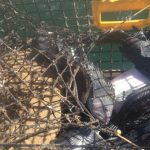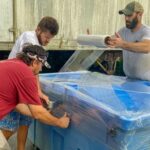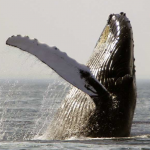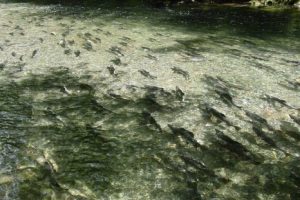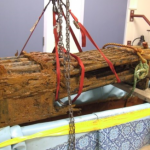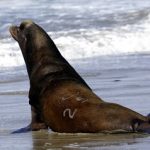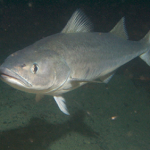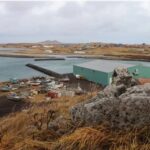Monthly Archives: May 2016
Ocean Signal presents new M100 and M100X Maritime Survivor Locating Device with AIS
 The M100 and M100X Maritime Survivor Locating Device (MSLD) with Automatic Identification System (AIS) and 121.5MHz homing beacon. Designed for the professional marine market and suitable for all offshore and lone workers, the rugged man overboard devices are designed to unobtrusively attach to immersion suits and inflatable life jackets ready for automatic activation on inflation of the jacket or on submersion when fitted to the suit. Available in two versions, the M100X is designed to meet the European ATEX directive and the IECEx approval for use in Zone 2 explosive atmospheres and is ideal for use in environments such as oil rigs, offshore platforms or other hazardous areas. The M100 device is suitable for all other commercial use, such as wind farm users, off shore workers, fishing fleets and fish farm workers, and helicopter transfers. Read the rest here 08:29
The M100 and M100X Maritime Survivor Locating Device (MSLD) with Automatic Identification System (AIS) and 121.5MHz homing beacon. Designed for the professional marine market and suitable for all offshore and lone workers, the rugged man overboard devices are designed to unobtrusively attach to immersion suits and inflatable life jackets ready for automatic activation on inflation of the jacket or on submersion when fitted to the suit. Available in two versions, the M100X is designed to meet the European ATEX directive and the IECEx approval for use in Zone 2 explosive atmospheres and is ideal for use in environments such as oil rigs, offshore platforms or other hazardous areas. The M100 device is suitable for all other commercial use, such as wind farm users, off shore workers, fishing fleets and fish farm workers, and helicopter transfers. Read the rest here 08:29
Commercial fishermen: Net ban would destroy N.C. seafood industry
 A state House bill first introduced 16 years ago has been resurrected that would ban the use of large trawling nets in state waters, a move that the commercial fishing industry says could destroy the livelihood for most North Carolina fishermen. New Bern native Billy Richardson, D-Cumberland, filed a bill that would let voters decide whether to outlaw gill and certain other nets in all state coastal waters. If the N.C. General Assembly supports House Bill 1122, the binding referendum would be on the November election ballot. “It would be the end of North Carolina’s (commercial) fishery,” said Wayne Dunbar, a waterman for nearly 40 years, located in Pamlico County’s Paradise Shores on Lower Broad Creek, leading into the Pamlico Sound. “People that don’t fish wouldn’t get North Carolina seafood.” Read the story here 18:44
A state House bill first introduced 16 years ago has been resurrected that would ban the use of large trawling nets in state waters, a move that the commercial fishing industry says could destroy the livelihood for most North Carolina fishermen. New Bern native Billy Richardson, D-Cumberland, filed a bill that would let voters decide whether to outlaw gill and certain other nets in all state coastal waters. If the N.C. General Assembly supports House Bill 1122, the binding referendum would be on the November election ballot. “It would be the end of North Carolina’s (commercial) fishery,” said Wayne Dunbar, a waterman for nearly 40 years, located in Pamlico County’s Paradise Shores on Lower Broad Creek, leading into the Pamlico Sound. “People that don’t fish wouldn’t get North Carolina seafood.” Read the story here 18:44
Community Supported Fisheries processing plant planned for False Creek
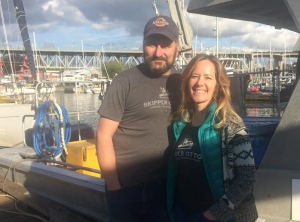 Shaun and Sonia Strobel founded Skipper Otto’s Community Supported Fishery in 2008 as a way for Otto Strobel — Shaun’s father — to keep fishing independently at a time when it was becoming increasingly more difficult for fishermen like him to make a living in B.C. Now, another 39 boats have joined their collective and more than 1700 customers pay up front — on average $300 per year — to have the chance to order and pick-up fresh fish, shellfish and other food direct from B.C.’s waters. “The lack of secure processing is the biggest hurdle we have to overcome,” said Shaun Strobel, who added that up to 75 per cent of what he and other fishermen in the collective catch has to be processed. Some of that is done on the boats and in the limited space that the Strobels and others have at the False Creek Fishermen’s Wharf, but most often they must turn to fish processors who are already busy with contracts from much larger companies. Read the rest here 15:36
Shaun and Sonia Strobel founded Skipper Otto’s Community Supported Fishery in 2008 as a way for Otto Strobel — Shaun’s father — to keep fishing independently at a time when it was becoming increasingly more difficult for fishermen like him to make a living in B.C. Now, another 39 boats have joined their collective and more than 1700 customers pay up front — on average $300 per year — to have the chance to order and pick-up fresh fish, shellfish and other food direct from B.C.’s waters. “The lack of secure processing is the biggest hurdle we have to overcome,” said Shaun Strobel, who added that up to 75 per cent of what he and other fishermen in the collective catch has to be processed. Some of that is done on the boats and in the limited space that the Strobels and others have at the False Creek Fishermen’s Wharf, but most often they must turn to fish processors who are already busy with contracts from much larger companies. Read the rest here 15:36
Leo “The Hypocrite” DiCaprio flies 8,000 miles in private jet to accept ‘green award’
 Oscar-winner Leonardo DiCaprio flew an additional 8,000 miles from France to New York and back to accept an award on climate change. The actor suffered a massive blow on his carbon footprint when he took one jet from the Cannes Film Festival to New York City to attend the green awards ceremony, before hopping on board a second jet for a fund-raising event back in Cannes the following evening. The New York awards ceremony was the Riverkeeper Fishermen’s Ball at Chelsea Piers, where he was honoured by the clean-water advocacy group and fellow actor Robert De Niro for his efforts to raise awareness on climate change. Read the story here 13:49
Oscar-winner Leonardo DiCaprio flew an additional 8,000 miles from France to New York and back to accept an award on climate change. The actor suffered a massive blow on his carbon footprint when he took one jet from the Cannes Film Festival to New York City to attend the green awards ceremony, before hopping on board a second jet for a fund-raising event back in Cannes the following evening. The New York awards ceremony was the Riverkeeper Fishermen’s Ball at Chelsea Piers, where he was honoured by the clean-water advocacy group and fellow actor Robert De Niro for his efforts to raise awareness on climate change. Read the story here 13:49
Predator-prey relationship of Lingcod and Rockfish – Catching one improves chances for the other
 The UW scientists examined this predator-prey relationship between lingcod and rockfish to see if allowing lingcod fishing in rockfish conservation areas could take some of the pressure off of rockfish and let small juveniles grow bigger and stronger to rival lingcod. Their models showed that modestly fishing for lingcod in these areas using different, more selective gear could avoid harming rockfish. It would also benefit fishermen and could bring more tasty fish to the market. “This is about the ability to actually use a resource that’s out there — lingcod, which is now a really reproductive and healthy stock,” said senior author Tim Essington, UW professor and associate director of the School of Aquatic and Fishery Sciences. Read the rest here 12:50
The UW scientists examined this predator-prey relationship between lingcod and rockfish to see if allowing lingcod fishing in rockfish conservation areas could take some of the pressure off of rockfish and let small juveniles grow bigger and stronger to rival lingcod. Their models showed that modestly fishing for lingcod in these areas using different, more selective gear could avoid harming rockfish. It would also benefit fishermen and could bring more tasty fish to the market. “This is about the ability to actually use a resource that’s out there — lingcod, which is now a really reproductive and healthy stock,” said senior author Tim Essington, UW professor and associate director of the School of Aquatic and Fishery Sciences. Read the rest here 12:50
Will they finally be sunk? Sea Shepherd takes fight to Chinese fleets fishing illegally
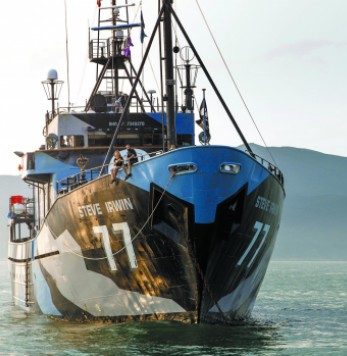 It took two days and nights for the exhausted crew of the MY Steve Irwin to recover the drift net that had been abandoned by the fleeing Chinese fishing vessel. Most of the 321 marine animals the 5km of illegal netting had entangled, including sharks, dolphins, bluefin tuna and seals, were already dead. “It was the worst thing we could see but we knew it was the last time this net would kill and we could at least save a few of the animals – that was important,” says Bernd Mutz, a former social worker from Dortmund, Germany, who took part in the operation. “The days of smoke flares are over,” says Gary Stokes, director of Sea Shepherd Southeast Asia. Based in Hong Kong, Stokes is one of eight global directors who run the organisation, and its eight vessels, under the watchful eye of controversial Canadian founder Paul Watson (more on him later). Read the rest here 11:23
It took two days and nights for the exhausted crew of the MY Steve Irwin to recover the drift net that had been abandoned by the fleeing Chinese fishing vessel. Most of the 321 marine animals the 5km of illegal netting had entangled, including sharks, dolphins, bluefin tuna and seals, were already dead. “It was the worst thing we could see but we knew it was the last time this net would kill and we could at least save a few of the animals – that was important,” says Bernd Mutz, a former social worker from Dortmund, Germany, who took part in the operation. “The days of smoke flares are over,” says Gary Stokes, director of Sea Shepherd Southeast Asia. Based in Hong Kong, Stokes is one of eight global directors who run the organisation, and its eight vessels, under the watchful eye of controversial Canadian founder Paul Watson (more on him later). Read the rest here 11:23
State legislators get taste of N.C. commercial fishing bounty at N.C. Fish Fry and Seafood Sampler
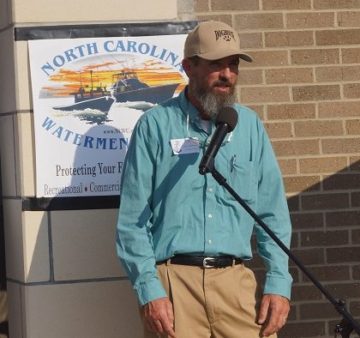 Close to a dozen organizations representing the commercial fishing industry were on hand to introduce North Carolina’s government leaders to the state’s seafood bounty. This gathering has become one of the most important forums for members of the industry to explain the important economic contributions made by the commercial seafood industry, all while battling federal and state regulators, environmental interests, and a well-funded recreational fishing industry which often seeks to reduce commercial catch quotas and restrict harvesting methods. Sen. Bill Cook (R-Beaufort) and Sen. Norman Sanderson (R-Pamlico) enlightened their colleagues about the economic importance, cultural heritage and threats to the long-term survival of commercial fishermen, and appealed for their support. Read the rest here 10:04
Close to a dozen organizations representing the commercial fishing industry were on hand to introduce North Carolina’s government leaders to the state’s seafood bounty. This gathering has become one of the most important forums for members of the industry to explain the important economic contributions made by the commercial seafood industry, all while battling federal and state regulators, environmental interests, and a well-funded recreational fishing industry which often seeks to reduce commercial catch quotas and restrict harvesting methods. Sen. Bill Cook (R-Beaufort) and Sen. Norman Sanderson (R-Pamlico) enlightened their colleagues about the economic importance, cultural heritage and threats to the long-term survival of commercial fishermen, and appealed for their support. Read the rest here 10:04
This Irish documentary about fishing and oil is making people angry
 The Atlantic Ocean can be wild, dangerous, beautiful and mystical. It provides a stunning view, a home to shoals of fish and marine life. But it also provides a livelihood for fishermen and those who trawl the sea for fish, and companies who drill for oil and gas. Director Risteard Ó Domhnaill is the man behind the acclaimed documentary The Pipe, about the Shell pipeline controversy in Rossport, Co Mayo. It was an intimate story, but one which taught him about the bigger picture of politics and industry around natural resources, says the director. Atlantic was meant to be a half-hour documentary about the oil and gas resources that Ireland has, but like many projects, it blossomed. The resulting film looks at how these resources as well as the fishing industry are treated in Ireland – but also in Newfoundland and in Norway. Read the story here 08:57
The Atlantic Ocean can be wild, dangerous, beautiful and mystical. It provides a stunning view, a home to shoals of fish and marine life. But it also provides a livelihood for fishermen and those who trawl the sea for fish, and companies who drill for oil and gas. Director Risteard Ó Domhnaill is the man behind the acclaimed documentary The Pipe, about the Shell pipeline controversy in Rossport, Co Mayo. It was an intimate story, but one which taught him about the bigger picture of politics and industry around natural resources, says the director. Atlantic was meant to be a half-hour documentary about the oil and gas resources that Ireland has, but like many projects, it blossomed. The resulting film looks at how these resources as well as the fishing industry are treated in Ireland – but also in Newfoundland and in Norway. Read the story here 08:57
Then there was that time the Coast Guard tried using pigeons for sea rescues
 Back in the late 1970s and early 80s, the Coast Guard thought they had a better way to search for people lost in the ocean. They tested using pigeons affixed to the underside of helicopters. Yes, like the pigeons in the park. And, yes, it did work. The birds performed about twice as well as their human counterparts at spotting “appropriate targets” on their first pass over an area. The pigeons involved in Project Sea Hunt, as the effort was known, were first sent to “basic training.” For obvious reasons, about the only thing pigeon basic shared with human basic was the name. Pigeons were placed in training chambers with “peck keys” that released food when pressed. Once the pigeons got the hang of the keys, their training boxes would be faced toward Kaneohe Bay, Hawaii, where a buoy with a radio-operated orange plate floated. Trainers would expose the orange plate and then reward the pigeon when it hit the keys, but wouldn’t feed the pigeons if the plate wasn’t exposed. Read the story here, see more images here 15:22
Back in the late 1970s and early 80s, the Coast Guard thought they had a better way to search for people lost in the ocean. They tested using pigeons affixed to the underside of helicopters. Yes, like the pigeons in the park. And, yes, it did work. The birds performed about twice as well as their human counterparts at spotting “appropriate targets” on their first pass over an area. The pigeons involved in Project Sea Hunt, as the effort was known, were first sent to “basic training.” For obvious reasons, about the only thing pigeon basic shared with human basic was the name. Pigeons were placed in training chambers with “peck keys” that released food when pressed. Once the pigeons got the hang of the keys, their training boxes would be faced toward Kaneohe Bay, Hawaii, where a buoy with a radio-operated orange plate floated. Trainers would expose the orange plate and then reward the pigeon when it hit the keys, but wouldn’t feed the pigeons if the plate wasn’t exposed. Read the story here, see more images here 15:22
Coast Guard Cutter Sanibel crew retrieves stranded fishing vessel off Nantucket Coast
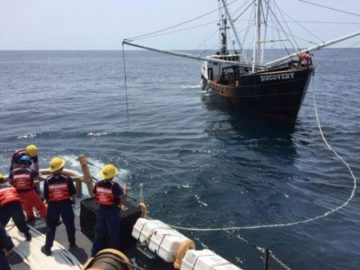 The crew of Coast Guard Cutter Sanibel towed an 84-foot commercial fishing vessel Friday with seven people aboard after the vessel became disabled 100 miles off the coast of Nantucket. Crewmembers aboard the fishing vessel Discovery, homeported in New Bedford, contacted watchstanders at Coast Guard Sector Southeastern’s command center at approximately 2:30 a.m. Friday reporting they had a disabled rudder and needed assistance. Sector Southeastern watchstanders issued a marine safety information broadcast at about 3 a.m. requesting nearby fishermen to assist. The request went unanswered by the other fishing vessels in the area. At approximately 3:30 a.m., the Coast Guard Cutter Sanibel crew diverted to assist. Link 15:01
The crew of Coast Guard Cutter Sanibel towed an 84-foot commercial fishing vessel Friday with seven people aboard after the vessel became disabled 100 miles off the coast of Nantucket. Crewmembers aboard the fishing vessel Discovery, homeported in New Bedford, contacted watchstanders at Coast Guard Sector Southeastern’s command center at approximately 2:30 a.m. Friday reporting they had a disabled rudder and needed assistance. Sector Southeastern watchstanders issued a marine safety information broadcast at about 3 a.m. requesting nearby fishermen to assist. The request went unanswered by the other fishing vessels in the area. At approximately 3:30 a.m., the Coast Guard Cutter Sanibel crew diverted to assist. Link 15:01
Jim Kendall: Little-known effort puts Northeast fishermen at risk under the National Ocean Policy
 In my 50-plus years as a member of the New England fishing community, I have witnessed many threats to our survival as a result of regulatory overreach. However, there is one in particular that demands the attention of everyone concerned about maintaining a viable fishing industry in our region: the coastal and marine spatial planning (CMSP) effort under the National Ocean Policy. Haven’t heard of it? Believe me, you’re not alone. Just like catch shares, this initiative has been implemented around rather than through Congress, its genesis being a presidential executive order issued in 2010 that led to the chartering of a government-only Northeast Regional Planning Body (RPB) and a National Ocean Council charged with overseeing it and other RPBs around the country. The RPB’s task: Develop a coastal and marine spatial plan for waters spanning from Connecticut to Maine. Now, in a rush to complete a plan for the Northeast before the end of 2016, the RPB is set to release a draft plan that federal agencies will be bound to implement when final. Read the rest here 13:59
In my 50-plus years as a member of the New England fishing community, I have witnessed many threats to our survival as a result of regulatory overreach. However, there is one in particular that demands the attention of everyone concerned about maintaining a viable fishing industry in our region: the coastal and marine spatial planning (CMSP) effort under the National Ocean Policy. Haven’t heard of it? Believe me, you’re not alone. Just like catch shares, this initiative has been implemented around rather than through Congress, its genesis being a presidential executive order issued in 2010 that led to the chartering of a government-only Northeast Regional Planning Body (RPB) and a National Ocean Council charged with overseeing it and other RPBs around the country. The RPB’s task: Develop a coastal and marine spatial plan for waters spanning from Connecticut to Maine. Now, in a rush to complete a plan for the Northeast before the end of 2016, the RPB is set to release a draft plan that federal agencies will be bound to implement when final. Read the rest here 13:59
Whatcom fishing fleet likely to stay longer in Alaska this season
 With the fishing season in local waters still uncertain, a bigger contingent of the Whatcom County commercial fishing fleet may stay in Alaska longer this season. Commercial fishing men and women are busy loading up boats in places like Squalicum Harbor, with many planning to head north in the coming days and weeks. Loren Kapp and Cathy Wade are expecting a good, but not blockbuster, fishing season in Alaska. They operate the Chief Kwina, a former Lummi Island ferry that is now a salmon tender boat. They plan to depart for Alaska on Monday, May 23. “With the warm blob going away, it should help,” said Kapp, referring to the area of warm water that settled in the ocean waters east of Vancouver Island for the past couple of years. There is the potential for cooler waters in the area this year, which is what the salmon prefer. Read the rest here 12:30
With the fishing season in local waters still uncertain, a bigger contingent of the Whatcom County commercial fishing fleet may stay in Alaska longer this season. Commercial fishing men and women are busy loading up boats in places like Squalicum Harbor, with many planning to head north in the coming days and weeks. Loren Kapp and Cathy Wade are expecting a good, but not blockbuster, fishing season in Alaska. They operate the Chief Kwina, a former Lummi Island ferry that is now a salmon tender boat. They plan to depart for Alaska on Monday, May 23. “With the warm blob going away, it should help,” said Kapp, referring to the area of warm water that settled in the ocean waters east of Vancouver Island for the past couple of years. There is the potential for cooler waters in the area this year, which is what the salmon prefer. Read the rest here 12:30
Sussex waterman nabbed for mutiple crabbing violations – cops a plea
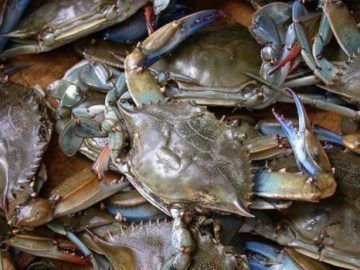 Delaware Division of Fish & Wildlife Natural Resources Police arrested a Sussex County man May 19 for multiple commercial crabbing violations on the Inland Bays, officials announced in a release. John L. Fabryka, 53, of Ocean View, was charged with one count of unlawful commercial crabbing in a non-commercial area, 10 counts of tending more than two recreational crab pots, 10 counts of improperly marked recreational crab pots and six counts of failure to tend recreational crab pots at least once within required 72-hour timeframe, according to the release. Read the rest here 11:07
Delaware Division of Fish & Wildlife Natural Resources Police arrested a Sussex County man May 19 for multiple commercial crabbing violations on the Inland Bays, officials announced in a release. John L. Fabryka, 53, of Ocean View, was charged with one count of unlawful commercial crabbing in a non-commercial area, 10 counts of tending more than two recreational crab pots, 10 counts of improperly marked recreational crab pots and six counts of failure to tend recreational crab pots at least once within required 72-hour timeframe, according to the release. Read the rest here 11:07
Gov. John Bel Edwards appoints Telley Madina to the Louisiana Wildlife and Fisheries Commission
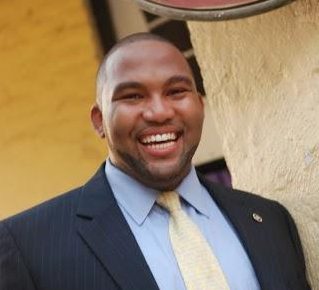 Commercial fishing interests have a new representative on the state board that regulates their industry. Gov. John Bel Edwards has appointed Telley Savalas Madina of New Orleans to the Louisiana Wildlife and Fisheries Commission. Madina, who will represent the commercial fishing and fur industries, replaces Nathan Wall, an alligator farmer from Springfield, who recently resigned from the seven-member board. Madina was executive director of the Louisiana Oystermen Association in 2010 and 2011 and is still a board member. He serves as CEO of Red & Blue Consulting of New Orleans. The Wildlife and Fisheries Commission sets policy dealing with recreational and commercial fishing, hunting and other outdoor activities. Read the rest here 09:34
Commercial fishing interests have a new representative on the state board that regulates their industry. Gov. John Bel Edwards has appointed Telley Savalas Madina of New Orleans to the Louisiana Wildlife and Fisheries Commission. Madina, who will represent the commercial fishing and fur industries, replaces Nathan Wall, an alligator farmer from Springfield, who recently resigned from the seven-member board. Madina was executive director of the Louisiana Oystermen Association in 2010 and 2011 and is still a board member. He serves as CEO of Red & Blue Consulting of New Orleans. The Wildlife and Fisheries Commission sets policy dealing with recreational and commercial fishing, hunting and other outdoor activities. Read the rest here 09:34
P.E.I. fishermen are not happy with the lobster size increase
 A decision to increase the lobster carapace size for Lobster Fishing Area 25 has upset the P.E.I. Fishermen’s Association. The Department of Fisheries and Oceans issued a notice to fishermen Friday informing them of the change. PEIFA executive director Ian MacPherson said he doesn’t believe the science supports a carapace increase. “Island fishermen just can’t see the value in having less choice for the consumer and having more lobster competing in certain size categories for price,” said MacPherson. “Half of the plants on Prince Edward Island rely on the smaller lobster as a large part of their marketing efforts. They have been marketing to different parts of the world that want that smaller lobster so, you know, this is a real disappointment.” Read the rest here 09:03
A decision to increase the lobster carapace size for Lobster Fishing Area 25 has upset the P.E.I. Fishermen’s Association. The Department of Fisheries and Oceans issued a notice to fishermen Friday informing them of the change. PEIFA executive director Ian MacPherson said he doesn’t believe the science supports a carapace increase. “Island fishermen just can’t see the value in having less choice for the consumer and having more lobster competing in certain size categories for price,” said MacPherson. “Half of the plants on Prince Edward Island rely on the smaller lobster as a large part of their marketing efforts. They have been marketing to different parts of the world that want that smaller lobster so, you know, this is a real disappointment.” Read the rest here 09:03
Fisheries and Oceans Canada – Lobster size minimums to increase in Lobster Fishing Area 25
 New Brunswick lobster fishermen are “ecstatic” about the federal government’s decision to increase the minimum size for lobster harvested between the southeast of the province and P.E.I., by five millimetres over the next three years. Fisheries and Oceans Canada issued a notice on Friday, informing harvesters of the change for the western half of the Northumberland Strait, known as Lobster Fishing Area 25. “Our harvesters feel this is an historical decision,” said Christian Brun, executive secretary of the Maritime Fishermen’s Union in New Brunswick. It comes after a long-standing dispute between fishermen in New Brunswick and P.E.I. over carapace size, he said. The legal harvesting size will increase by one millimetre to 73 mm this season, and will further increase to 75 mm in 2017 and 77 mm in 2018, according to the government notice. Read the rest here 20:49
New Brunswick lobster fishermen are “ecstatic” about the federal government’s decision to increase the minimum size for lobster harvested between the southeast of the province and P.E.I., by five millimetres over the next three years. Fisheries and Oceans Canada issued a notice on Friday, informing harvesters of the change for the western half of the Northumberland Strait, known as Lobster Fishing Area 25. “Our harvesters feel this is an historical decision,” said Christian Brun, executive secretary of the Maritime Fishermen’s Union in New Brunswick. It comes after a long-standing dispute between fishermen in New Brunswick and P.E.I. over carapace size, he said. The legal harvesting size will increase by one millimetre to 73 mm this season, and will further increase to 75 mm in 2017 and 77 mm in 2018, according to the government notice. Read the rest here 20:49
Piscine Reo-Virus found in salmon on one fish farm in B.C. but more research needed
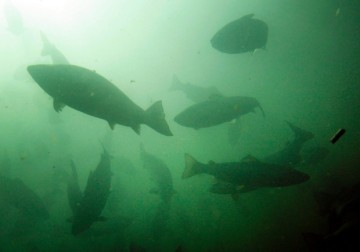 Scientists have detected a potential disease in farmed Atlantic salmon for the first time in British Columbia, but say more research is needed to determine if it could affect wild populations of the fish. Dr. Kristi Miller, head of the molecular genetics research program in the Department of Fisheries and Oceans, said pathologists found lesions on salmon on one farm in Johnstone Strait indicating they had heart and skeletal muscle inflammation. “These lesions were present for an extended period of time, at least eight months, on this (undisclosed) farm,” Miller said Friday. The Piscine Reo-Virus has been associated with all outbreaks of heart and skeletal muscle inflammation, as it was on the single B.C. farm, but it’s not known if it causes the disease, Miller said, adding scientists around the world are investigating how the virus could be linked to the disease. Read the rest here 19:36
Scientists have detected a potential disease in farmed Atlantic salmon for the first time in British Columbia, but say more research is needed to determine if it could affect wild populations of the fish. Dr. Kristi Miller, head of the molecular genetics research program in the Department of Fisheries and Oceans, said pathologists found lesions on salmon on one farm in Johnstone Strait indicating they had heart and skeletal muscle inflammation. “These lesions were present for an extended period of time, at least eight months, on this (undisclosed) farm,” Miller said Friday. The Piscine Reo-Virus has been associated with all outbreaks of heart and skeletal muscle inflammation, as it was on the single B.C. farm, but it’s not known if it causes the disease, Miller said, adding scientists around the world are investigating how the virus could be linked to the disease. Read the rest here 19:36
Man arrested for poaching 153 black sea bass
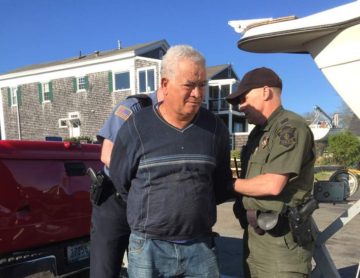 A Rhode Island man fishing out of season was out of luck after being busted with 153 black sea bass at Mattapoisett Town Wharf on Wednesday. Mattapoisett Harbormaster Jill Simmons became suspicious of Belmiro Baptista, 65, of Patwucket, Rhode Island after helping him attach his boat to his truck. Baptista told her he had a commercial fishing license and was fishing for scup. He also told her he caught five or six sea bass, “for eat,” said the Portuguese native. He later said he had eight bass. Simmons, unsure if sea bass were in season, called the Department of Marine Fisheries and the Massachusetts Environmental Police, who told her that the fish were not, in fact, in season for recreational fishing until Saturday, May 21. Even if it had been the correct season, Baptista did not have a recreational saltwater license. The commercial season for the fish begins Aug. 1. Read the rest here 17:12
A Rhode Island man fishing out of season was out of luck after being busted with 153 black sea bass at Mattapoisett Town Wharf on Wednesday. Mattapoisett Harbormaster Jill Simmons became suspicious of Belmiro Baptista, 65, of Patwucket, Rhode Island after helping him attach his boat to his truck. Baptista told her he had a commercial fishing license and was fishing for scup. He also told her he caught five or six sea bass, “for eat,” said the Portuguese native. He later said he had eight bass. Simmons, unsure if sea bass were in season, called the Department of Marine Fisheries and the Massachusetts Environmental Police, who told her that the fish were not, in fact, in season for recreational fishing until Saturday, May 21. Even if it had been the correct season, Baptista did not have a recreational saltwater license. The commercial season for the fish begins Aug. 1. Read the rest here 17:12
A dream becomes a nightmare
 When Dick Garbowski, a commercial fisherman in Green Bay, snagged an expensive net on an unknown obstruction in Lake Michigan in 1967, he probably did not know that he would set events in motion that would culminate in crushed dreams and a demolished schooner with a historical designation. Garbowski called an experienced diver and friend, Frank Hoffman, to help him free his $1,400 fishing net. The two originally kept their problem a secret, because as V.O. Van Heest writes in “Lost and Found,” “Garbowski had kept quiet about the predicament worried that someone might hear about it and try to abscond with the $1,400 net. Hoffman, too, had kept quiet because he knew that news of a new wreck could bring out other divers intent on looting.” was not until the summer of 1968 that the net was finally freed and Frank Hoffman realized he had an almost intact shipwreck to explore. The shipwreck was the Alvin Clark. Read the story here 16:42
When Dick Garbowski, a commercial fisherman in Green Bay, snagged an expensive net on an unknown obstruction in Lake Michigan in 1967, he probably did not know that he would set events in motion that would culminate in crushed dreams and a demolished schooner with a historical designation. Garbowski called an experienced diver and friend, Frank Hoffman, to help him free his $1,400 fishing net. The two originally kept their problem a secret, because as V.O. Van Heest writes in “Lost and Found,” “Garbowski had kept quiet about the predicament worried that someone might hear about it and try to abscond with the $1,400 net. Hoffman, too, had kept quiet because he knew that news of a new wreck could bring out other divers intent on looting.” was not until the summer of 1968 that the net was finally freed and Frank Hoffman realized he had an almost intact shipwreck to explore. The shipwreck was the Alvin Clark. Read the story here 16:42
Fishermen celebrate after catching ‘drunk monster’ eel
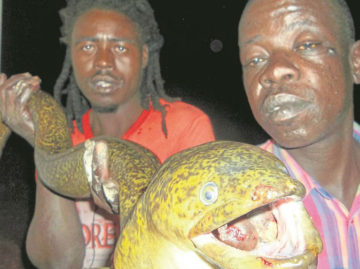 Adolph Nwarhombi (32) and Go-Back Makhuvele (26) from Makuleke near Malamulele, Limpopo poured 25 litres of traditional beer in the water where they were fishing. They now believe that this is the secret to successful fishing because after they caught a 1.2m (4 ft) long eel. Go-Back told Daily Sun that they poured the beer in the water and when they came back in the evening they realised there was something very strange under the surface. “We waited about for three minutes after casting and then pulled the net into the boat. “We knew we had caught something special. It was like a monster and very strong. It nearly pulled us out of the boat,” he said. It was dark and they couldn’t see what was in the net. “We were scared that we had a crocodile in the net,” he said. “We thought of jumping out of the boat and running home. But then the monster started getting tired. After half an hour it finally surrendered. “Go-Back said they couldn’t believe it when they switched on their torches and saw the giant eel in the net. Adolph said: “I believe the eel got drunk on our beer and that’s why we defeated it. We’ll sell it for R500 ($ 31.98 USD).” link
Adolph Nwarhombi (32) and Go-Back Makhuvele (26) from Makuleke near Malamulele, Limpopo poured 25 litres of traditional beer in the water where they were fishing. They now believe that this is the secret to successful fishing because after they caught a 1.2m (4 ft) long eel. Go-Back told Daily Sun that they poured the beer in the water and when they came back in the evening they realised there was something very strange under the surface. “We waited about for three minutes after casting and then pulled the net into the boat. “We knew we had caught something special. It was like a monster and very strong. It nearly pulled us out of the boat,” he said. It was dark and they couldn’t see what was in the net. “We were scared that we had a crocodile in the net,” he said. “We thought of jumping out of the boat and running home. But then the monster started getting tired. After half an hour it finally surrendered. “Go-Back said they couldn’t believe it when they switched on their torches and saw the giant eel in the net. Adolph said: “I believe the eel got drunk on our beer and that’s why we defeated it. We’ll sell it for R500 ($ 31.98 USD).” link
Advisory group wants to move Astoria Marine Construction Co. Shipyard, Fishermen leery
 The advisory group overseeing the cleanup of Astoria Marine Construction Co.’s contaminated shipyard has asked the state to support a public-private partnership to relocate the business. The long-term impact of the closure of AMCCO on our fishing fleet could have severe economic consequences, as the loss of the fleet will impact fish processing and other businesses related to the fishing industry,” Löfman wrote. “Commercial fishing represents 18.6 percent ($142.4 million) of all earned income in Clatsop County.” Löfman, who also sent the letter to a long list of local, state and national legislators, said she put the letter out to raise awareness about the clear need for the shipyard. Dave Jordan, an advisory group member who lives near Tillamook and bases his fishing boat out of Warrenton, said it takes him as little as 45 minutes for his boat to get to Astoria Marine. Astoria Marine helps change his equipment between the crab, shrimp and tuna seasons, along with biennial haul-outs and emergency repairs. “That’s one of the big losses, is the emergency part of it,” he said. “It’s a bad deal. Boats might sink because it’s not there.” Read the story here 13:06
The advisory group overseeing the cleanup of Astoria Marine Construction Co.’s contaminated shipyard has asked the state to support a public-private partnership to relocate the business. The long-term impact of the closure of AMCCO on our fishing fleet could have severe economic consequences, as the loss of the fleet will impact fish processing and other businesses related to the fishing industry,” Löfman wrote. “Commercial fishing represents 18.6 percent ($142.4 million) of all earned income in Clatsop County.” Löfman, who also sent the letter to a long list of local, state and national legislators, said she put the letter out to raise awareness about the clear need for the shipyard. Dave Jordan, an advisory group member who lives near Tillamook and bases his fishing boat out of Warrenton, said it takes him as little as 45 minutes for his boat to get to Astoria Marine. Astoria Marine helps change his equipment between the crab, shrimp and tuna seasons, along with biennial haul-outs and emergency repairs. “That’s one of the big losses, is the emergency part of it,” he said. “It’s a bad deal. Boats might sink because it’s not there.” Read the story here 13:06
Bay of Fundy Inshore Fishermen’s Association launches petition to halt Bay of Fundy tidal projects
 Chris Hudson, president of the Bay of Fundy Inshore Fishermen’s Association started the petition this week, asking that tidal power testing be halted until their association is satisfied the fisheries won’t be harmed. The association is one of Nova Scotia’s biggest fishing groups, representing 150 lobster and fixed gear groundfish licence holders in the Bay, from the Yarmouth county line to the Nova Scotia-New Brunswick border. “We haven’t been contacted about this whatsoever,” Hudson told the Chronicle Herald. “And that’s not acceptable. We’re not saying we’re against it, we just want to be around the table to talk about the exact plans. There’s a lot of ifs.” Hudson says he was contacted by the Fundy Ocean Research Center for Energy (FORCE) on Wednesday with background information. “That’s a start,” he said. Read the story here 12:27
Chris Hudson, president of the Bay of Fundy Inshore Fishermen’s Association started the petition this week, asking that tidal power testing be halted until their association is satisfied the fisheries won’t be harmed. The association is one of Nova Scotia’s biggest fishing groups, representing 150 lobster and fixed gear groundfish licence holders in the Bay, from the Yarmouth county line to the Nova Scotia-New Brunswick border. “We haven’t been contacted about this whatsoever,” Hudson told the Chronicle Herald. “And that’s not acceptable. We’re not saying we’re against it, we just want to be around the table to talk about the exact plans. There’s a lot of ifs.” Hudson says he was contacted by the Fundy Ocean Research Center for Energy (FORCE) on Wednesday with background information. “That’s a start,” he said. Read the story here 12:27
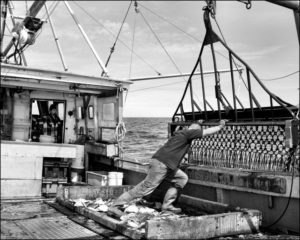
“Scallop Fishing on the Mister G” – Photographer Markham Starr captures a day in the life
“I should have been born 150 years ago,” said Markham Starr, a man who actively documents the present so it can be preserved for the future. In recent years, Starr has documented working cultures throughout New England, mostly through photography. Many of these images have been organized into books, such as “In History’s Wake: The Last Trap Fishermen of Rhode Island,” which “documents a tradition now hundreds of years old, capturing the spirit and work ethic that drives Rhode Island’s fishermen to continue providing food for their neighbors.” More recently, Starr began capturing these stories through video. In 2011, he spent a day scallop fishing on a small boat called Mister G with its owner, Mike Marchetti, and that experience has been made into a 45-minute film, “Scallop Fishing on the Mister G,” which will have its first public showing at Peace Dale Library, 1057 Kingstown Road, Peace Dale, Saturday at 2 p.m. Read the rest here 09:48
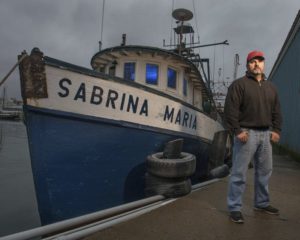
Gloucester Fisherman Al Cottone to serve as city’s fisheries director
Al Cottone, 50, a longtime Gloucester fisherman and a staunch advocate for the commercial fishing industry, is filling the newly re-created job, Chairman Mark Ring announced at Thursday night’s Fisheries Commission meeting at Gloucester High School. The position has been dormant for several years, but Mayor Sefatia Romeo Theken, in consultation with the Fisheries Commission, reignited a belief that the city and its fishing industry would greatly benefit from re-establishing the position to serve as the city’s liaison to state, regional and federal fishery managers and regulators. Cottone currently serves as a voting member of the Fisheries Commission, but his status will shift to a non-voting member once he assumes the new position July 1. Cottone, Gloucester born and bred, is a familiar face and respected voice at fishing-related meetings of the state’s Division of Marine Fisheries, the New England Fishery Management Council and NOAA. Read the story here 08:34
Feds Drop Buoy-Napping Case Against Fishermen
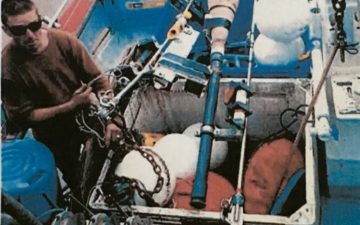 Cooler heads have prevailed, and the feds earlier this week dropped their lawsuit against two fisherman who seized a piece of scientific equipment operated by the United States Geological Survey. A source close to the situation told Courthouse News that the “oceanographic mooring buoy,” known as Scientific Mooring MS, was returned to the United States Geological Survey. The buoy had previously been in the possession of two Moss Landing, California-based fishermen. Daneil Sherer and Patrick Anderson, who run A&S Fisheries, found the piece of equipment in January and demanded $45,000 to return of the equipment. The feds sued the fisherman in late March, accusing them of holding government property “de facto hostage” and causing irreparable harm to an international research project. Read the rest here 20:34
Cooler heads have prevailed, and the feds earlier this week dropped their lawsuit against two fisherman who seized a piece of scientific equipment operated by the United States Geological Survey. A source close to the situation told Courthouse News that the “oceanographic mooring buoy,” known as Scientific Mooring MS, was returned to the United States Geological Survey. The buoy had previously been in the possession of two Moss Landing, California-based fishermen. Daneil Sherer and Patrick Anderson, who run A&S Fisheries, found the piece of equipment in January and demanded $45,000 to return of the equipment. The feds sued the fisherman in late March, accusing them of holding government property “de facto hostage” and causing irreparable harm to an international research project. Read the rest here 20:34
Canada approves genetically modified salmon for sale to public
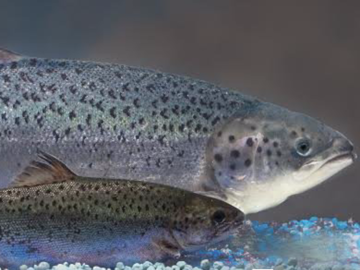 Canadian grocery stores have received the regulatory green light to begin selling fast-growing, genetically modified salmon – the first such species to gain such approval from federal agencies. Health Canada and the Canadian Food Inspection Agency announced Thursday they had completed a scientific review of AquAdvantage’s salmon and it has passed the final regulatory hurdle for the farmed fish. The fish was developed by U.S.-based biotechnology firm AquaBounty Technologies Inc. to promote rapid growth of the fish during early life, using a growth hormone gene from the Chinook salmon in an Atlantic salmon. The company has one facility in Canada, in Bay Fortune, P.E.I., and a production centre in Panama. Dave Conley, a spokesman for the firm, said in an email that it will be a year or more before the firm has any production of market-sized fish. Read the rest here 18:53
Canadian grocery stores have received the regulatory green light to begin selling fast-growing, genetically modified salmon – the first such species to gain such approval from federal agencies. Health Canada and the Canadian Food Inspection Agency announced Thursday they had completed a scientific review of AquAdvantage’s salmon and it has passed the final regulatory hurdle for the farmed fish. The fish was developed by U.S.-based biotechnology firm AquaBounty Technologies Inc. to promote rapid growth of the fish during early life, using a growth hormone gene from the Chinook salmon in an Atlantic salmon. The company has one facility in Canada, in Bay Fortune, P.E.I., and a production centre in Panama. Dave Conley, a spokesman for the firm, said in an email that it will be a year or more before the firm has any production of market-sized fish. Read the rest here 18:53
The first of two towering tidal power turbines to enter Bay of Fundy next month
 The first of two towering turbines designed by Cape Sharp Tidal to harness the immense power of the Bay of Fundy will be installed next month off the coast of Nova Scotia, an company official announced Thursday. Sarah Dawson, the community relations manager for the project, said one of the five-storey high, two-megawatt turbines built in Pictou by Aecon Atlantic Industrial Inc., will be loaded on a barge during the first week of June and travel around the province until it reaches the test site near Parrsboro. That trip will take a couple of weeks. The new turbines are a bigger and more robust version of a turbine tested by OpenHydro and Nova Scotia Power in 2009 that was heavily damaged by the Bay of Fundy’s powerful currents. Read the rest here 18:04
The first of two towering turbines designed by Cape Sharp Tidal to harness the immense power of the Bay of Fundy will be installed next month off the coast of Nova Scotia, an company official announced Thursday. Sarah Dawson, the community relations manager for the project, said one of the five-storey high, two-megawatt turbines built in Pictou by Aecon Atlantic Industrial Inc., will be loaded on a barge during the first week of June and travel around the province until it reaches the test site near Parrsboro. That trip will take a couple of weeks. The new turbines are a bigger and more robust version of a turbine tested by OpenHydro and Nova Scotia Power in 2009 that was heavily damaged by the Bay of Fundy’s powerful currents. Read the rest here 18:04
Can Hag Fish gloop be useful to humans?
 The carrion-eating hagfish has been described as the “vacuum cleaner of the ocean”. But it also has another claim to fame: it can see off its attackers in a puff of slime. Zurich scientists are researching how this fast-forming hydrogel could be harnessed for human use. Jawless and boneless, the hagfish is a rather ugly-looking marine creature that has been around for more than 300 million years. So why are the hagfish of interest to researchers at the lab? The answer is in the creature’s slime. When the hagfish is attacked or stressed it secretes vast amounts of the substance as a defence mechanism – as this shark finds out in this clip. It has to back off or face suffocation. “Hagfish slime is special in many ways,” doctoral student Böni told swissinfo.ch. “It’s the most dilute hydrogel known today. It consists of 99.996% water which is a world record.” Read the article here 13:46
The carrion-eating hagfish has been described as the “vacuum cleaner of the ocean”. But it also has another claim to fame: it can see off its attackers in a puff of slime. Zurich scientists are researching how this fast-forming hydrogel could be harnessed for human use. Jawless and boneless, the hagfish is a rather ugly-looking marine creature that has been around for more than 300 million years. So why are the hagfish of interest to researchers at the lab? The answer is in the creature’s slime. When the hagfish is attacked or stressed it secretes vast amounts of the substance as a defence mechanism – as this shark finds out in this clip. It has to back off or face suffocation. “Hagfish slime is special in many ways,” doctoral student Böni told swissinfo.ch. “It’s the most dilute hydrogel known today. It consists of 99.996% water which is a world record.” Read the article here 13:46
LIFO policy: Newfoundland and Labrador will take a major hit if the inshore shrimp fishery collapses
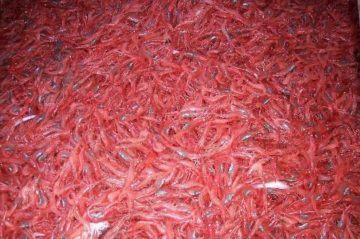 “In 2015, the inshore shrimp fishery contributed $250 million to the economy of rural Newfoundland and Labrador,” Phil Barnes said. “Economic hubs like Gander, Grand Falls-Windsor, Corner Brook and St. John’s all benefit from the inshore fishery. “Inshore harvesters buy vehicles, groceries, fuel, gear and repair services. Plant workers also spend their income at local businesses,” he said. Barnes said the Department of Fisheries and Oceans (DFO) has to scrap its “last in-first out” (LIFO) for the Northern shrimp fishery. “Our inshore fleet has access to one area (Area 6) for a few months of the year while the offshore trawlers are in multiple areas all year round,” he said. “Someone is always there and this has to stop. Read the story here 12:57
“In 2015, the inshore shrimp fishery contributed $250 million to the economy of rural Newfoundland and Labrador,” Phil Barnes said. “Economic hubs like Gander, Grand Falls-Windsor, Corner Brook and St. John’s all benefit from the inshore fishery. “Inshore harvesters buy vehicles, groceries, fuel, gear and repair services. Plant workers also spend their income at local businesses,” he said. Barnes said the Department of Fisheries and Oceans (DFO) has to scrap its “last in-first out” (LIFO) for the Northern shrimp fishery. “Our inshore fleet has access to one area (Area 6) for a few months of the year while the offshore trawlers are in multiple areas all year round,” he said. “Someone is always there and this has to stop. Read the story here 12:57
Fisherman tells Thai court of beer tab that led to years of slavery
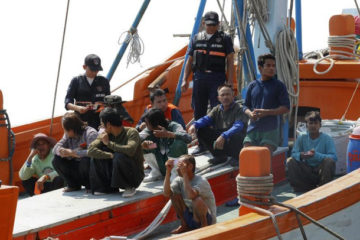 A fisherman from Myanmar described meeting a job broker while having a beer with a friend in the fishing port town of Kantang in southern Thailand. While chatting with the broker, he passed out drunk, without paying for his beer. Four days later, the broker told him he owed her 2,000 baht ($50) for his unpaid beer and his four-day stay in her home, and would have to work to pay off his debt. He ended up enslaved on a fishing boat, working five years without pay, he told a court in Thailand’s southern Trang province as the proceedings began last week in a human trafficking case against nine defendants. The defendants include the broker, as well as the owner of Boonlarp Fishing Co. Ltd., whom prosecutors say is the chief of the trafficking ring. Read the rest here 12:41
A fisherman from Myanmar described meeting a job broker while having a beer with a friend in the fishing port town of Kantang in southern Thailand. While chatting with the broker, he passed out drunk, without paying for his beer. Four days later, the broker told him he owed her 2,000 baht ($50) for his unpaid beer and his four-day stay in her home, and would have to work to pay off his debt. He ended up enslaved on a fishing boat, working five years without pay, he told a court in Thailand’s southern Trang province as the proceedings began last week in a human trafficking case against nine defendants. The defendants include the broker, as well as the owner of Boonlarp Fishing Co. Ltd., whom prosecutors say is the chief of the trafficking ring. Read the rest here 12:41

































